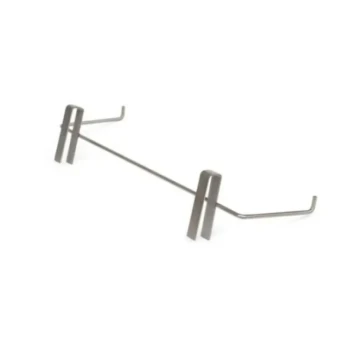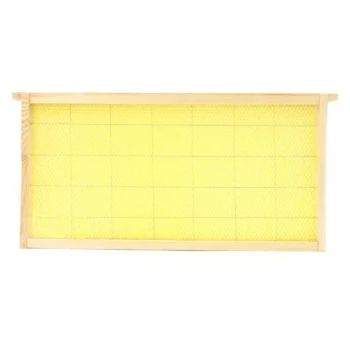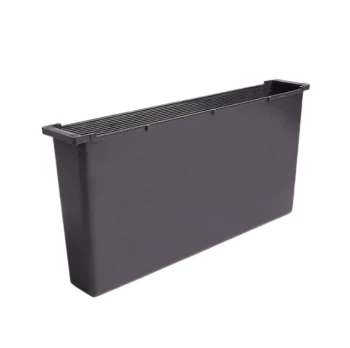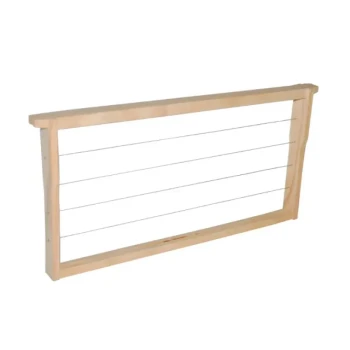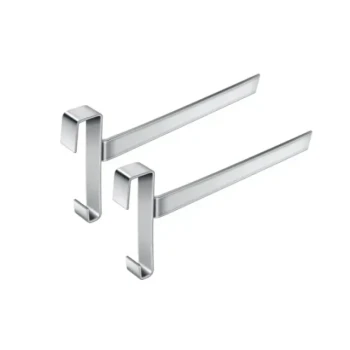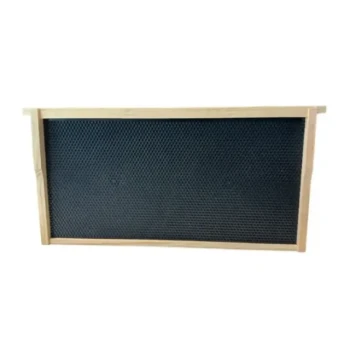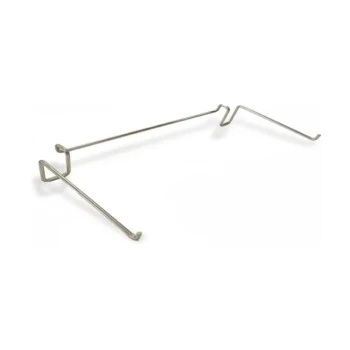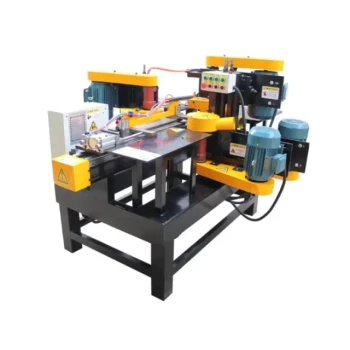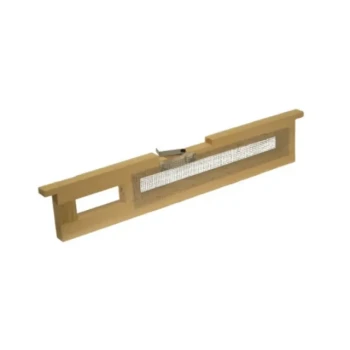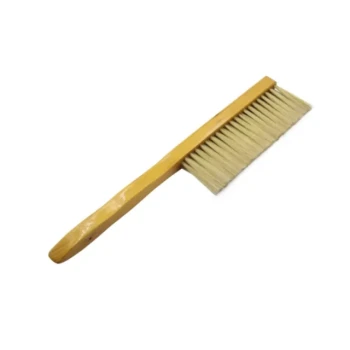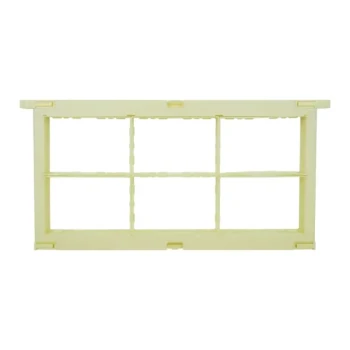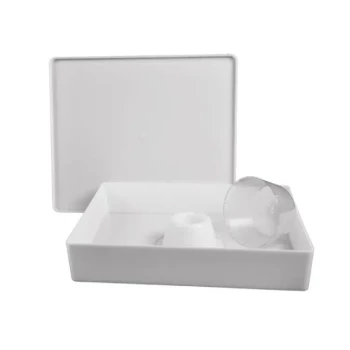As a best practice, you should replace brood frames at least every three years. This systematic rotation is a cornerstone of integrated pest and disease management for a healthy colony. Factors such as disease outbreaks or the frequent use of certain chemical treatments for varroa mites may require you to replace frames even more frequently.
The core principle is not about the age of the wood, but the age of the wax. Old brood comb acts as a reservoir for pathogens and chemical residues, and rotating it out is one of the most impactful preventative health measures a beekeeper can take.
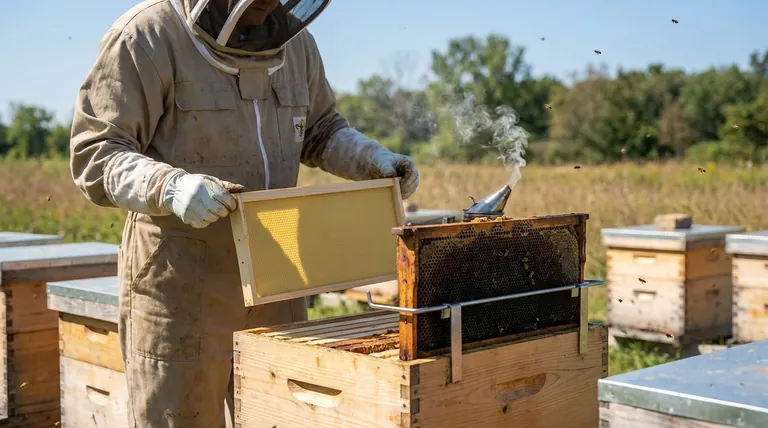
The Rationale Behind Comb Rotation
Understanding why you replace comb is more important than simply following a schedule. Old wax presents accumulating risks to the colony's health and vitality.
Breaking the Disease Cycle
Old, dark comb can harbor a host of problems. Spores from diseases like American Foulbrood (AFB) and chalkbrood can remain viable in the wax for years, waiting for the right conditions to infect new larvae.
Each generation of brood raised in a cell also leaves behind a shed cocoon. Over time, this accumulation shrinks the cell's interior volume, which can lead to slightly smaller, less robust adult bees.
Reducing Chemical Contamination
Beeswax acts like a natural sponge, particularly for fat-soluble substances. Residues from agricultural pesticides or in-hive varroa mite treatments (miticides) can build up in the comb over time.
Varroacides containing active ingredients like thymol or tau-fluvalinate are known to accumulate in wax. High concentrations of these residues can negatively impact queen fertility and larval development, subtly weakening the colony from within.
Maintaining Hive Integrity
Old comb becomes brittle and is more susceptible to damage during inspections. It is also a prime target for pests like wax moths. Fresh comb is more pliable, easier to inspect, and preferred by the queen for laying.
A Practical Schedule for Frame Replacement
A consistent plan removes guesswork and ensures you stay on top of hive hygiene.
The Baseline: The 3-Year Rule
The most common and manageable system is to replace roughly one-third of your brood frames each year. A simple method is to mark the top bar of each new frame with the year it was introduced.
This way, you always know the age of your comb and can easily identify the oldest frames for culling during a spring inspection.
When to Accelerate Rotation
You should replace frames immediately or on an accelerated schedule under specific circumstances.
- After a Disease Outbreak: If a colony has had a confirmed disease, all frames, especially the brood comb, should be considered for destruction to prevent recurrence.
- Following Heavy Miticide Use: If you have relied on frequent, long-term use of in-hive chemical treatments, a faster rotation helps purge contaminated wax from the hive.
- Damaged or Pest-Ridden Frames: Any frame with significant wax moth damage, mold, or broken sections should be removed as soon as it's discovered.
Understanding the Trade-offs
While beneficial, frame rotation is not without its costs. Acknowledging these helps you make balanced management decisions.
The Energy Cost to the Bees
Producing beeswax is one of the most energy-intensive tasks for a colony. Bees must consume large quantities of honey or nectar to fuel their wax glands and draw out new foundation.
Replacing too many frames at once, especially outside of a strong nectar flow, can temporarily set the colony back by diverting resources from brood rearing or honey storage.
The Financial Cost to the Beekeeper
Frames and foundation represent a recurring material cost. While this is a necessary expense for responsible beekeeping, it is a factor in budgeting and planning.
The Risk of Inaction
The trade-offs of replacement are minor compared to the risks of inaction. The slow, gradual decline of a colony due to pathogen load and chemical contamination is often harder to diagnose and far more costly in the long run.
Making the Right Choice for Your Goal
Your approach to frame rotation can be tailored to your specific situation and beekeeping philosophy.
- If your primary focus is simplicity and consistent health: Adopt the three-year rotation, replacing the two or three oldest frames in each brood box every spring.
- If you are dealing with a known health issue: Prioritize removing the affected and oldest frames immediately, even if it's mid-season, and plan to replace the rest of the brood comb over the next 12 months.
- If your primary focus is organic or treatment-free beekeeping: An annual rotation of at least one-third of your brood comb is critical to breaking pest and disease cycles without chemical intervention.
Proactive comb management is a direct investment in the long-term health and resilience of your colonies.
Summary Table:
| Scenario | Recommended Frame Replacement Schedule |
|---|---|
| Standard Best Practice | Replace 1/3 of brood frames annually (3-year rotation) |
| After Disease Outbreak | Replace all affected frames immediately |
| Heavy Chemical Treatment Use | Accelerate rotation to purge contaminated wax |
| Organic/ Treatment-Free Beekeeping | Annual rotation of at least 1/3 of brood comb is critical |
Invest in the long-term health of your apiary with HONESTBEE.
As a trusted supplier for commercial apiaries and beekeeping equipment distributors, we understand that proactive comb management is non-negotiable for a successful operation. Our high-quality, durable brood frames and foundation are designed to support your systematic rotation schedule, helping you break disease cycles and reduce chemical contamination.
Let us help you build a more resilient and productive beekeeping business. Contact HONESTBEE today to discuss your wholesale supply needs and ensure your colonies thrive.
Visual Guide
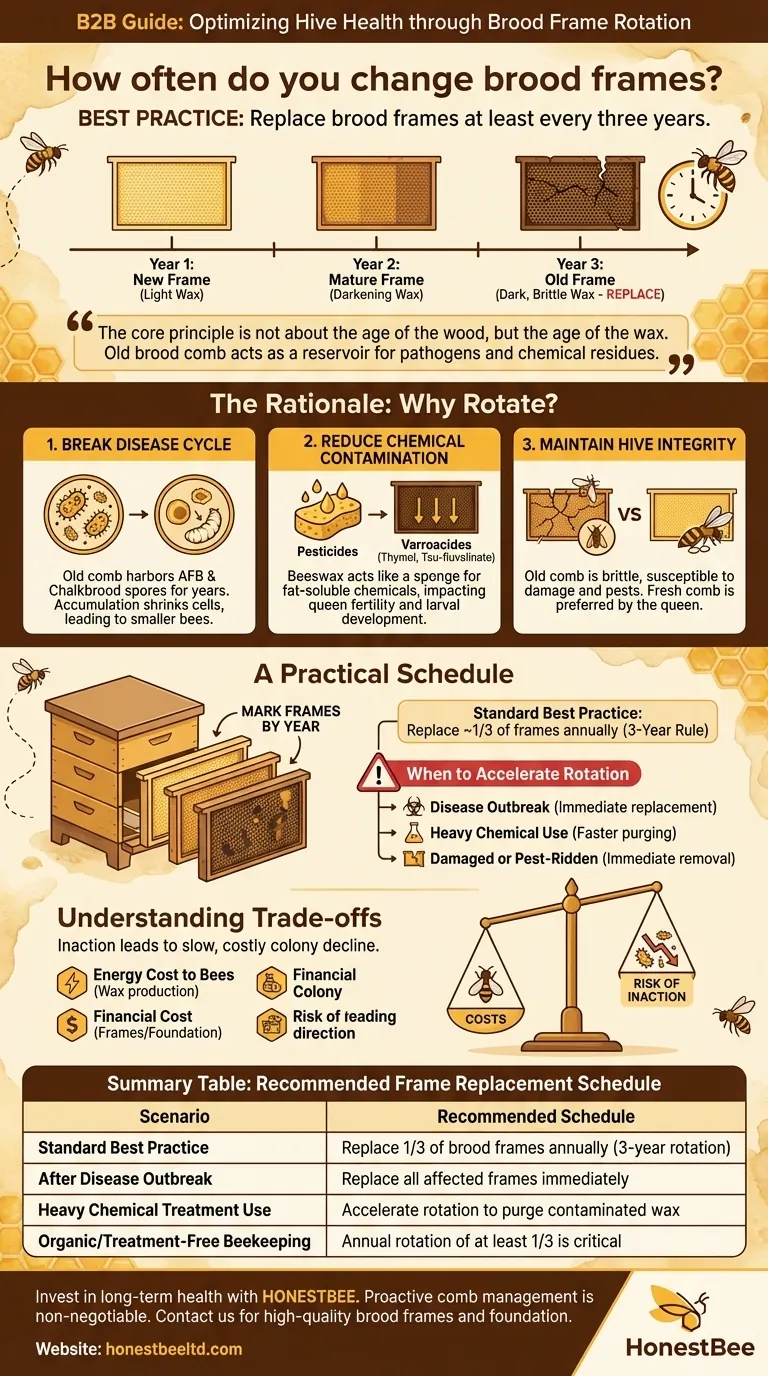
Related Products
- Heavy-Duty Stainless Steel Clip-On Frame Perch
- Assembled Wooden Bee Frames with Beeswax Foundation Ready to Use by HONESTBEE
- Plastic Bee Frame Beekeeping Hive Frames for Wholesale
- Professional In-Hive Bee Feeder HONESTBEE Frame for Beekeeping
- HONESTBEE Wired and Assembled Wooden Bee Frames Foundation for a Thriving Hive
People Also Ask
- How does the beehive frame perch improve hive inspections? Boost Efficiency & Protect Your Hive
- How does the frame perch ensure stability during use? Secure Your Hive Inspections with Physics-Driven Design
- How does the frame rest benefit the beekeeper during hive inspections? Boost Efficiency & Protect Your Colony
- What is the purpose of the frame perch? A Game-Changer for Efficient Hive Inspections
- What are the advantages of using a frame rest for the bees? Achieve Calmer, Safer Hive Inspections
